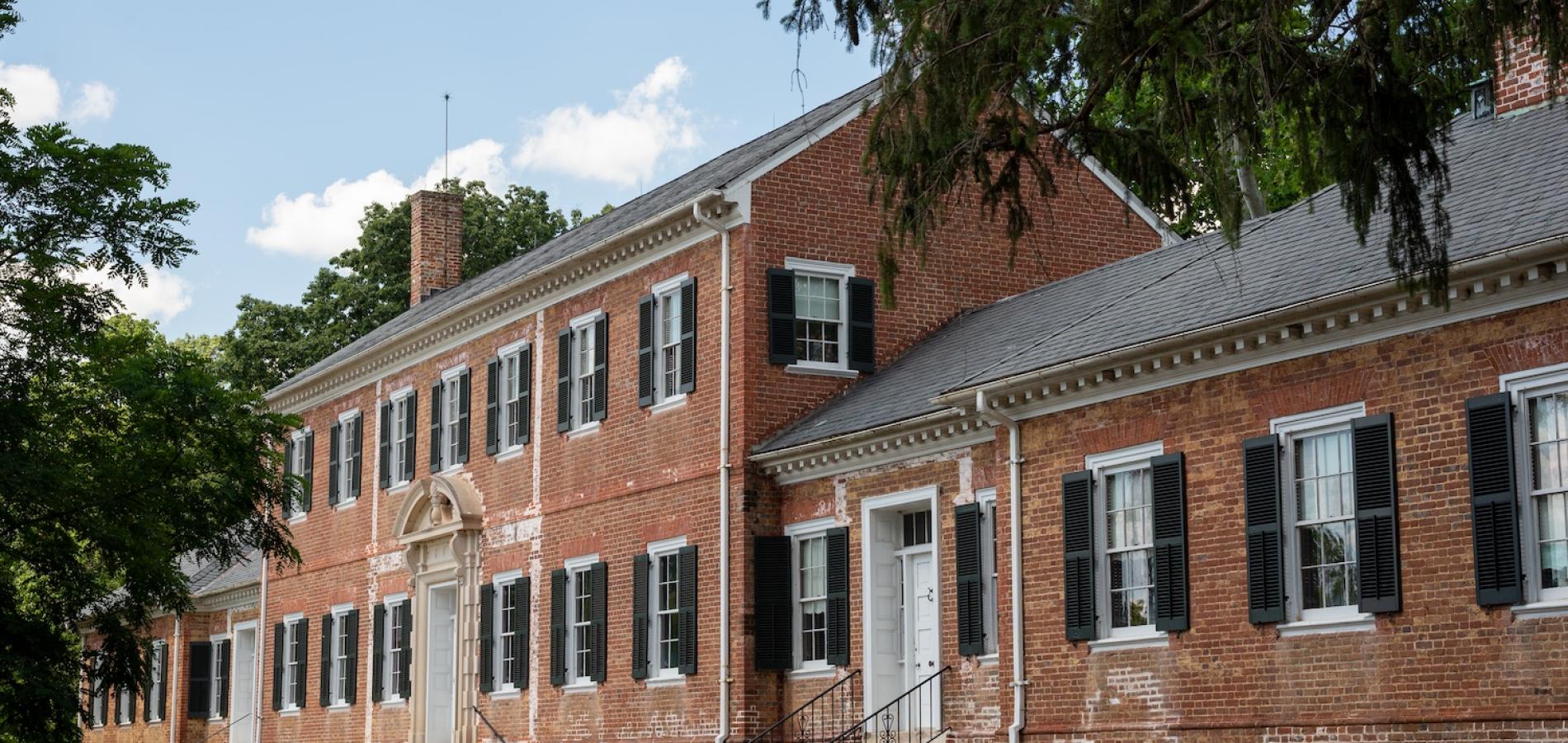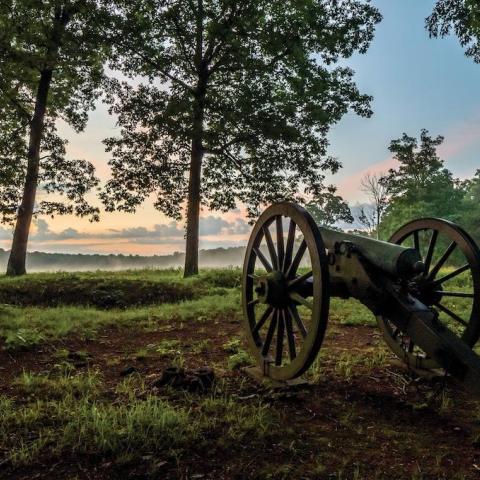
An artist's rendering of how Chatham appeared before the Battle of Fredericksburg/NPS
"Chatham."
That one word captures a rich and poignant chapter of American history spanning nearly 250 years. Still standing proud and high above the Rappahannock River opposite Fredericksburg, Virginia, on the grounds of Fredericksburg and Spotsylvania National Military Park, the Georgian-style brick manor dates to the late 18th century when the slave trade flourished in the fledgling United States. But its timeline passes through the Civil War, when it was used as both a Union headquarters and a field hospital, its grounds turned into a cemetery, and through the depressed years of Reconstruction before enjoying a renaissance early in the 20th century.
Though most visitors to the military park are drawn to the battlefields -- Fredericksburg, Chancellorsville, Wilderness, and Spotsylvania, with some finding their way to the Stonewall Jackson Shrine -- Chatham Manor shouldn't be overlooked, for the rich history steeped within its walls and grounds.
It was aristocracy that gave birth to the manor, as William Fitzhugh, armed with a towering inheritance, carved a sprawling plantation from the landscape and set upon it a mansion 210 feet long and just 30 wide. Thought to have been built between 1768 or 1769 and 1771, the mansion was named Chatham after William Pitt, the Earl of Chatham and prime minister of Great Britain.
During the Civil War the manor was owned by James Horace Lacy, a Southern sympathizer who joined the Confederate Army. His wife and children remained at Chatham until 1862, when the gathering war prompted them to flee and the house became a Union headquarters. And a field hospital, and even cemetery, as the grounds filled up with graves.

One of just three graves from the Civil War that remain on the Chatham grounds. After the war the others were moved to the Fredericksburg National Cemetery/Doc Repanshek
After the war, which ruined Lacy and left the manor in shambles, the house changed hands several times up until the 1920s, when Daniel and Helen Devore acquired the property, restored it, and installed many of the gardens with statues rising above the grassy lawns you see today. They also reversed the front and back of the mansion, moving the main entrance away from the river view to one viewing the gardens and farmlands beyond.
The manor came to the National Park Service in 1975, when it was willed to the agency by Lee Pratt, an industrialist who made his mark with Pierre S. du Pont and General Motors Corp. and who had purchased Chatham from the Devores for $150,000 in 1931.
Today many signs of Chatham's early days -- when the plantation covered nearly 1,300 acres and included orchards, a dairy, ice house, a fishery down along the Rappahannock River, even a race course for Fitzhugh to match his prize horses against his neighbors' -- are gone. You can walk the 85 acres surrounding the manor and enter the home, but the areas open to the public are empty of many of the furnishings of the past, instead taken up with exhibits of the families who lived here over 250 years and the military occupation during the Civil War.
Walk Chatham's hallways and rooms and you'll be walking floors trod by the likes of George Washington, Thomas Jefferson, Robert E. Lee, President Abraham Lincoln, Clara Barton, Walt Whitman. Their collective visits coincided with vastly different times and wars (both the Revolutionary War and Civil War). Paintings of William Fitzhugh and his wife, Ann Carter, hang in the entry room, while elsewhere in the mansion you'll find portraits or photographs of others who owned Chatham, including James Horace Lacy. Head outside onto the grounds and you can sight down the back of a cannon toward downtown Fredericksburg (the cannons were used to provide protection for Union crews building pontoon bridges across the river) and roam the gardens, which include a Koi pond with colorful water lilies.
Chatham reflects a significant and poignant time in the country's history, and a visit there is well worth the time. At the same time, don't overlook the battlefields or the Fredericksburg National Cemetery.




 Support Essential Coverage of Essential Places
Support Essential Coverage of Essential Places






